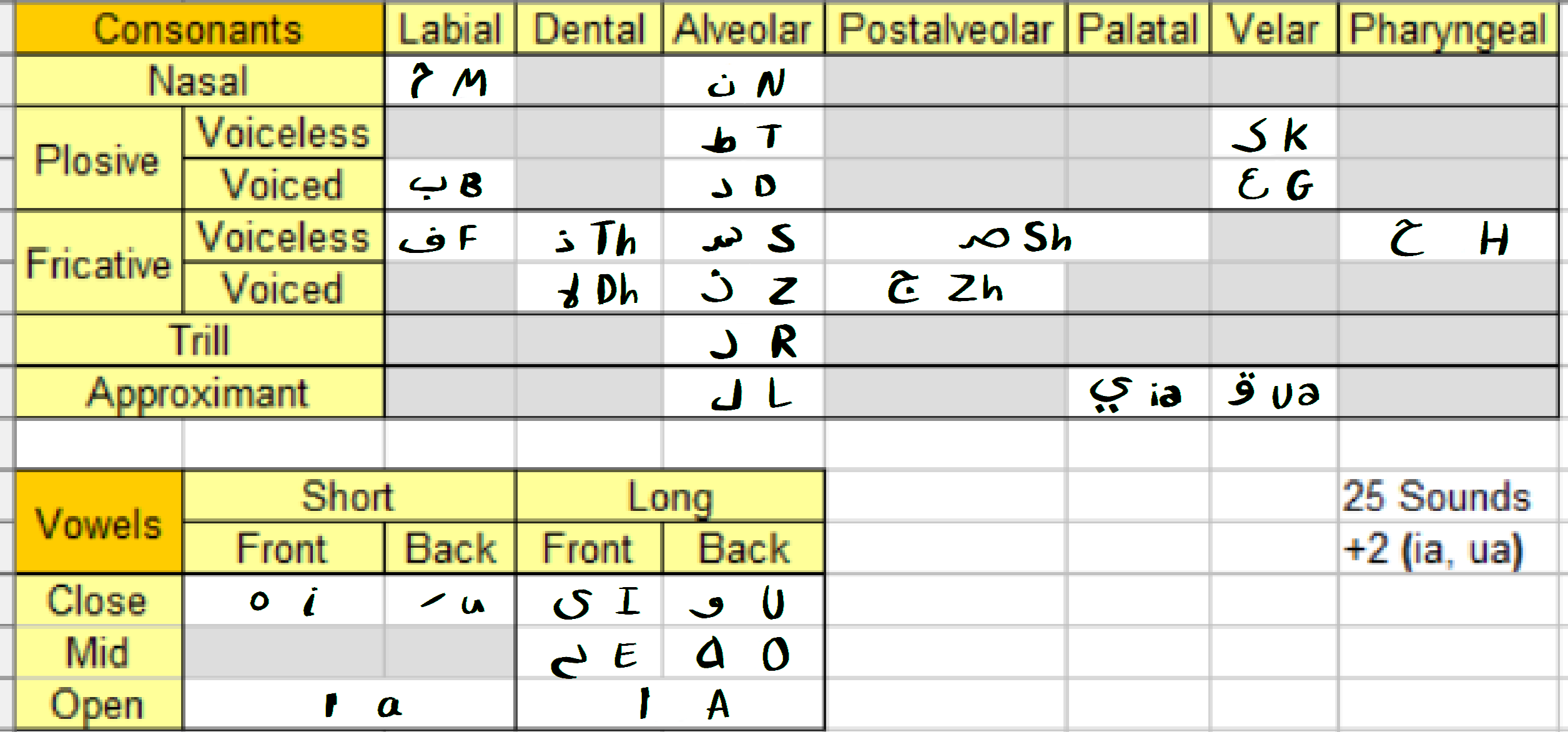/!\ WEBSITE UNDER CONSTRUCTION /!\
Phonotactics:
(c)(C)(C)V(C)(C)(C)
() - optional
C - Consonant
V - Vowel
c - Consonant (disallowed at the start of words)
Letters:
a i u A E I O U (Upper Case -> Long / Lower Case -> Short)
B G D Z K L M N R S T F H Zh Sh Th Dh
Onset: All sounds
Nucleus: A E I O U a i u H
Coda: All sounds
No plosive clustering:
There must be a sound between two plosives which is not itself a plosive. (B G D T K)
Amounts:
One: Root
Two: -i/-I/-hi (depends on the ending respectively: if it doesn't end with i, ends with i, ends with I)
Many: -SA/-aS/-aSh (what sounds better)
Animacy:
Celestial:
Stars
The Sun
The Moon
Of high importance
Difficult forms of Craft
Very formal
Dim:
Living beings
Most Craft
Formal
Dark:
Inanimates
Rock/Paper/Scissors Craft
Informal
Gender:
Masculine, Feminine, Neuter
DOES NOT APPLY TO CELESTIAL
Negation:
Double negation is required for statements:
A NOT is to be included before the verb, if the sentence is a question NOT should not be included.
A negation is to be applied to the end of the verb. In english this would be similar to:
I don't like croissants -> Croissants not liken't I
Do you not like croissants? -> Liken't you croissants?
Comparative: -(a)M/-a
Superlative: aK-/a-
Minimization:
-e- infix
Maximization:
Ka-/aK- prefix
Word order:
Adjective -> Noun
OLD TEXTS:
Active: OVS
Question: VOS
NEWER TEXTS:
Flexible word order
Adjective must end with same vowel as it's noun!
Possesion:
Possesee + ah + Possesor + Possesee ending vowel
A sentence DOES NOT REQUIRE a specific tesne to be specified.
"To Be" may NOT use past tense (cultural reasons)
Adjective formation:
If a word has a long U before the final vowel, infix -uTh-/-uDh- before the U
If the last vowel of the original word is short, and the second last vowel is long; shorten the long vowel and elongate the short vowel
If the word doesn't end with a velar plosive (K, G):
Add -aM/-iM/-uM suffix, suffix vowel should agree with the preceeding vowel.
Adverb formation:
Use Adjectives to form Adverbs, unless the required Adjective is non-existant
If a word starts with two plosives separated by an H, remove the first plosive and the H
Add an i at the end of the word
If the -a/i/u + M ending was added while forming the adjective, replace the vowel before the M with an i (BuLuM -> BuLiMi)





